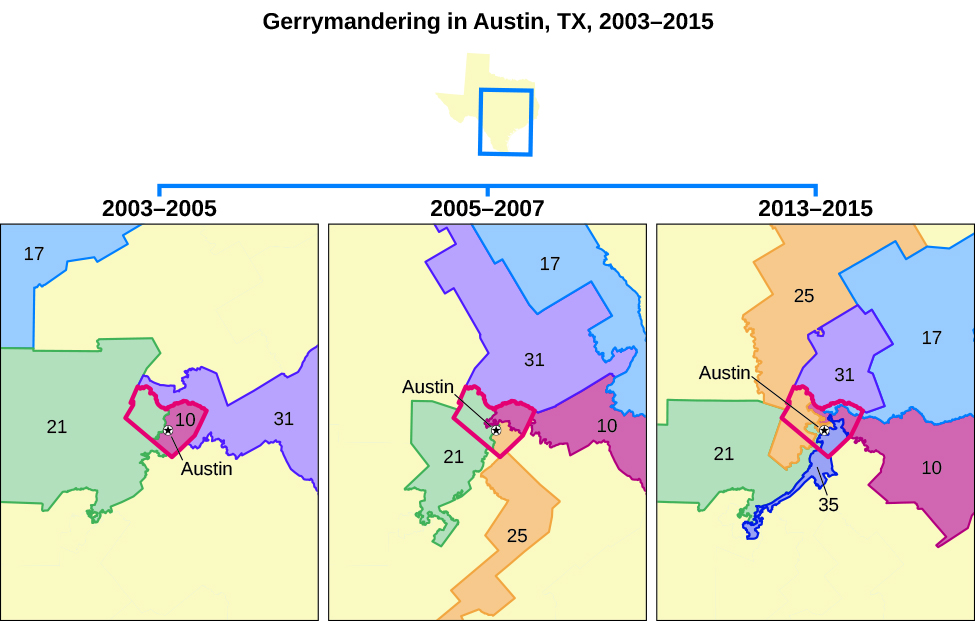| << Chapter < Page | Chapter >> Page > |
However, in its one-person-one-vote decision in
Reynolds v. Simms (1964), the Supreme Court argued that everyone’s vote should count roughly the same regardless of where they lived.
Of course, many early efforts at post- Reynolds gerrymandering were crude since map designers had no good way of knowing exactly where partisans lived. At best, designers might have a rough idea of voting patterns between precincts, but they lacked the ability to know voting patterns in individual blocks or neighborhoods. They also had to contend with the inherent mobility of the U.S. population, which meant the most carefully drawn maps could be obsolete just a few years later. Designers were often forced to use crude proxies for party, such as race or the socio-economic status of a neighborhood ( [link] ). Some maps were so crude they were ruled unconstitutionally discriminatory by the courts.

Proponents of the gerrymandering thesis point out that the decline in the number of moderate voters began during this period of increased redistricting. But it wasn’t until later, they argue, that the real effects could be seen. A second advance in redistricting, via computer-aided map making, truly transformed gerrymandering into a science. Refined computing technology, the ability to collect data about potential voters, and the use of advanced algorithms have given map makers a good deal of certainty about where to place district boundaries to best predetermine the outcomes. These factors also provided better predictions about future population shifts, making the effects of gerrymandering more stable over time. Proponents argue that this increased efficiency in map drawing has led to the disappearance of moderates in Congress.
According to political scientist Nolan
McCarty , there is little evidence to support the redistricting hypothesis alone. First, he argues, the Senate has become polarized just as the House of Representatives has, but people vote for Senators on a statewide basis. There are no gerrymandered voting districts in elections for senators. Research showing that more partisan candidates first win election to the House before then running successfully for the Senate, however, helps us understand how the Senate can also become partisan.

Notification Switch
Would you like to follow the 'American government' conversation and receive update notifications?